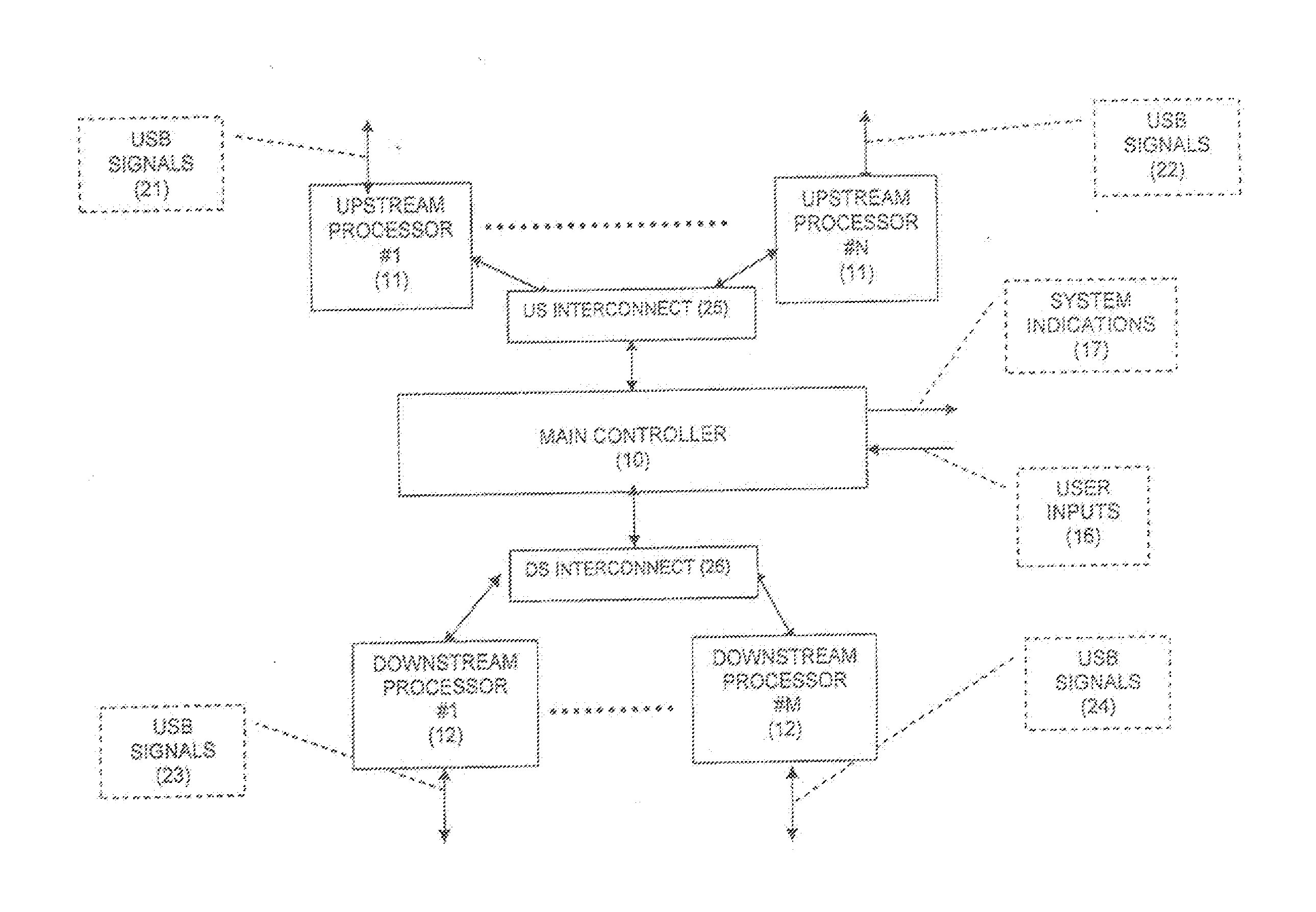In providing this capability and convenience, a number of tradeoffs had to be made, which result in limiting the application of the USB in many situations.
The following three USB specification requirements limit its application in many situations.
First, the tight timing specification has the consequence that in practice devices have to be no further away from the host than 30 meters.
Even this can only be achieved by connecting five hubs in series, since the cabling limit is 5 meters between a device and a hub.
Both the relatively short absolute length of 30 meters and the inconvenience and cost of having to use five extra hubs are a limitation in many computer applications.
The
disadvantage arises that all such devices have simultaneous access to the computer, allowing more than one user to enter or alter data, for example, possibly resulting in errors and undesirable results.
Third, the tight timing specification and protocol definition limit the ability to switch one device from one host, or computer, to another.
If the
communications protocol is not adhered to or the timing specification violated during switching, the host will detect an error, and after several
recovery attempts, will declare the device “inoperable” and refuse to communicate with it.
In addition, practical implementations of the USB specification requirements in commercially available computer operating systems that support USB put a
time limit on getting a response to requests to a device.
Both unplugging a device and plugging it in, result in a
processing delay in the host.
It takes the host time to detect device unplug, and additional time to detect and process device
plug in.
These delays are undesirable in many computer
system applications.
This
system's ability to improve the distance is limited, since it only decreases the
propagation delay in the cable, which does not result in a significant increase in distance.
However, the information flow is limited to data from the
peripheral device to the host.
There is no provision for the host to determine the nature and detailed capabilities of the
connected device, since the communications channel in the direction from the host to device carries only error reports.
That is, the host is not able to perform enumeration on the real device, only on the device emulator.
The system is thereby limited to
handle only devices that are specifically emulated in the device emulator.
The lack of a communications channel from host to device also prevents the host from commanding the device, which is needed in many devices.
Engler also does not have capability to
signal the host when a device, as opposed to the device emulator, has been plugged in or unplugged.
However, Kejser does not provide for error handling, and does not provide for timing management to prevent running into the babble condition at the Remote Expander either on sending data to the remote device or requesting data from it.
However, there is no provision in Ying's
multiplexer to assure that the timing requirements of the USB specification are met or any provisions to avoid collision of communications from the plurality of PC's.
None of the above prior art covers the situation where an USB-compliant device or multiple devices connect selectively to a number of USB hosts while meeting the timing requirements of the USB specification, nor do they cover the situation where multiple USB-compliant devices connect to the same host and are enabled selectively while meeting the timing requirements of the USB specification, nor the use of standard, unmodified USB hosts, hubs, and USB-compliant devices, nor provide true enumeration responses for a wide class of devices.
 Login to View More
Login to View More  Login to View More
Login to View More 


